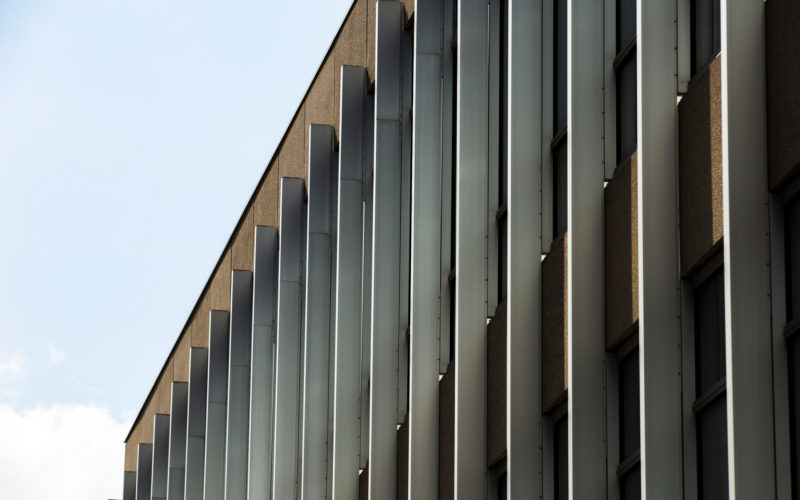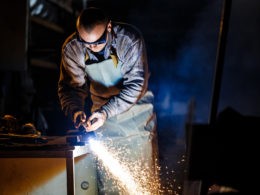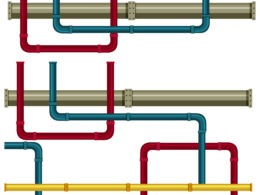Metal buildings are durable, dependable, and long-lasting. However, like any building, they’re not entirely maintenance-free. Weather, water, and usage over time can cause wear and tear. Without attention, small problems can become larger, more costly issues.
Fortunately, most of these repairs are simple, particularly if you know what to look for. This blog takes you through the most common causes of damage, how to recognize the telltale signs, and what you can do to maintain your building in top condition.
What Causes Wear and Tear in Metal Buildings?
The most prevalent cause is exposure to the weather. Sun, rain, wind, and snow slowly erode the surface finishes that shield the metal beneath. If those finishes begin to deteriorate, rust attacks right away. Introduce conditions such as inadequate drainage or insulation, and moisture becomes a problem.
Pre-engineered structures are built for both strength and efficiency, but with the tight integration comes the consequence that a single loose panel or misplaced seam can affect the entire section if not detected early. Even the best-designed metal buildings still need routine upkeep to stay problem-free.
How to Handle Common Repairs
Let’s look at some of the typical problems and how to fix them.
Wall Panels and Pre-Manufactured Systems
Wall panel issues are common, especially in buildings exposed to strong winds or shifting ground. Fasteners can come loose, and panels may bend or develop gaps. For traditional buildings, tightening or replacing fasteners is usually enough.
But Butler wall systems are a little complicated, as they are pre-manufactured and come with interlocking parts. If one panel gets damaged, it may affect how the rest of the system functions. It’s important to follow the manufacturer’s instructions when working with these components.
If you’re unsure how to handle repairs or replacements, this guide to Butler Building wall systems can help you understand the structure and materials used. Knowing the design behind the system makes it easier to identify the right fix without causing more damage.
Rust and Surface Damage
If you find rust on any metal surface, clean it off using a wire brush or scraper, then sand the area smooth. Apply a rust-resistant primer followed by a protective paint or coating.
If the rust has already spread beneath panels or fasteners, those parts may need to be replaced entirely to avoid further corrosion.
Roof Leaks and Panel Gaps
Small leaks can be sealed using patch kits, especially if caught early. If panels are cracked, warped, or pulling away from the frame, replacing them is usually the best option. Check that gutters are draining well because clogged gutters are often the root cause of roof leaks.
Also, watch for any panels that seem out of line, as that could be a sign of a shifting foundation or frame stress.
Insulation Fixes
Torn or damp insulation not only reduces energy efficiency; it can also lead to mold and rust. Replace damaged insulation as soon as possible and check for leaks around the area. You can also install a vapor barrier to prevent condensation from forming inside walls.
In many pre-engineered buildings, insulation is integrated with wall and roof panels; therefore, it’s essential to follow the correct procedure when replacing or adding insulation.
How to Know When Your Building Needs Repairs
Inspect regularly for visual, comfort, or performance changes. If you notice rust forming, see puddles inside after rain, or feel cold drafts where there shouldn’t be any, these are all signs of minor damage.
Cracks near the foundation, loose wall panels, and unusual dips in energy efficiency are also red flags. These aren’t always big problems on their own, but they shouldn’t be ignored either. Staying alert and doing simple walk-around inspections can help you catch small issues before they grow.
When to Bring in a Professional
While some tasks like replacing screws or repainting metal surfaces are easy to manage, others are more complex. Foundation issues, structural rust, or misaligned pre-fabricated wall systems should be handled by professionals.
If you’re experiencing recurring leaks, sagging panels, or cracks that continue to grow, don’t attempt to fix them yourself. Call in an expert to evaluate the full extent of the damage.
With buildings that use engineered systems, professional repair teams are often better equipped to make accurate fixes without compromising the structure.
Final Thoughts
Metal buildings, especially ones with advanced systems, are designed to last. But they still need care. Small problems like rust or panel damage can quickly grow if left unchecked. Fixing them early is usually simple, and routine maintenance can prevent most of them from happening at all. Just remember that pre-manufactured wall systems might need extra attention and sometimes a pro’s help to keep everything working as it should. Your building does its job every day. Give it the care it deserves so it can keep doing that for years to come.












